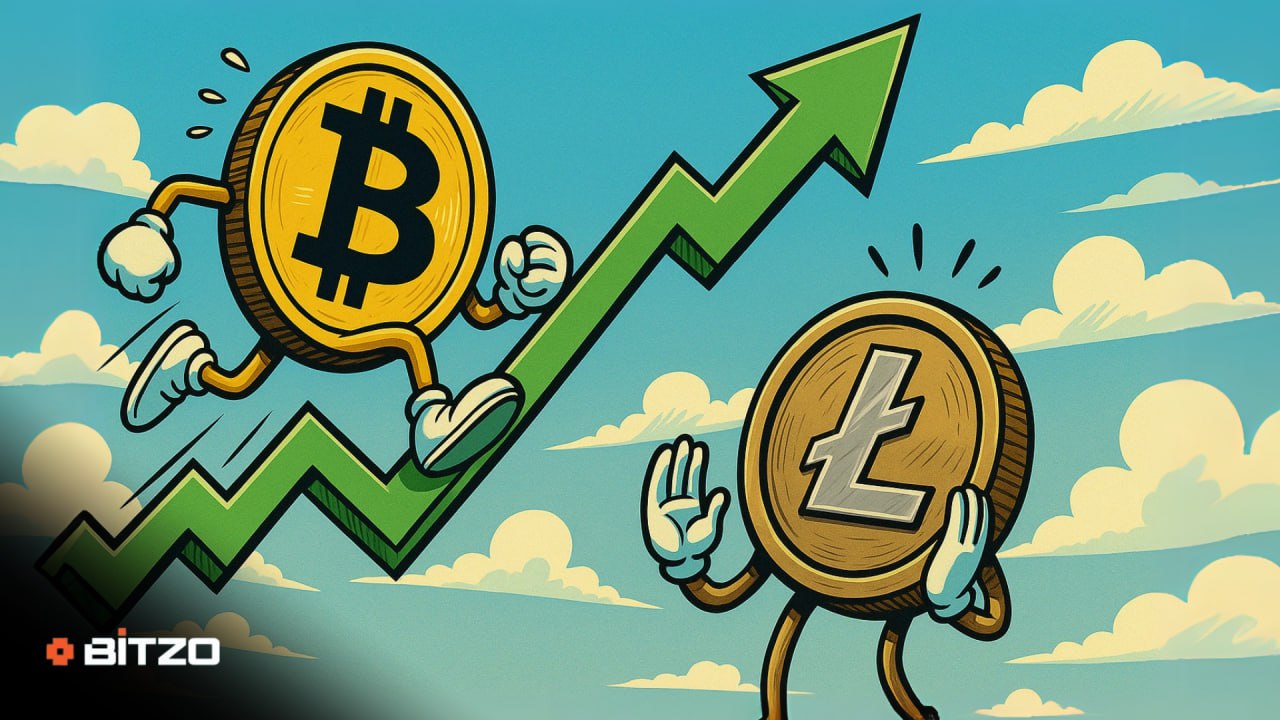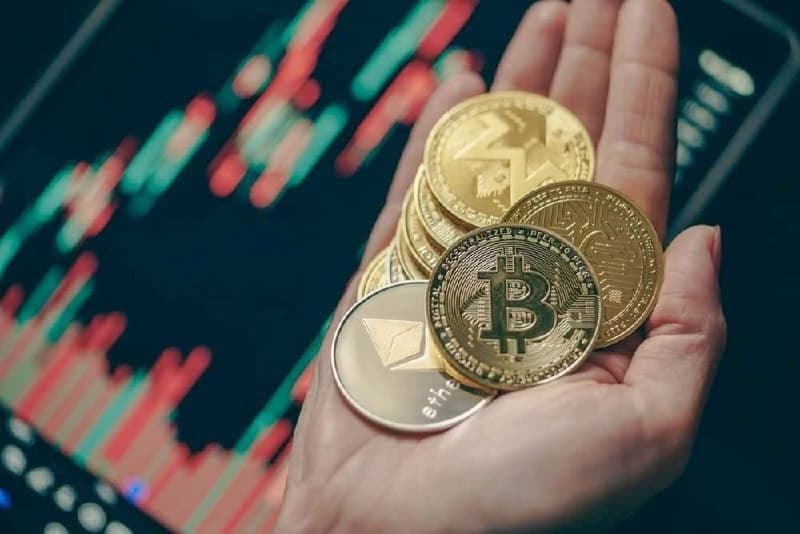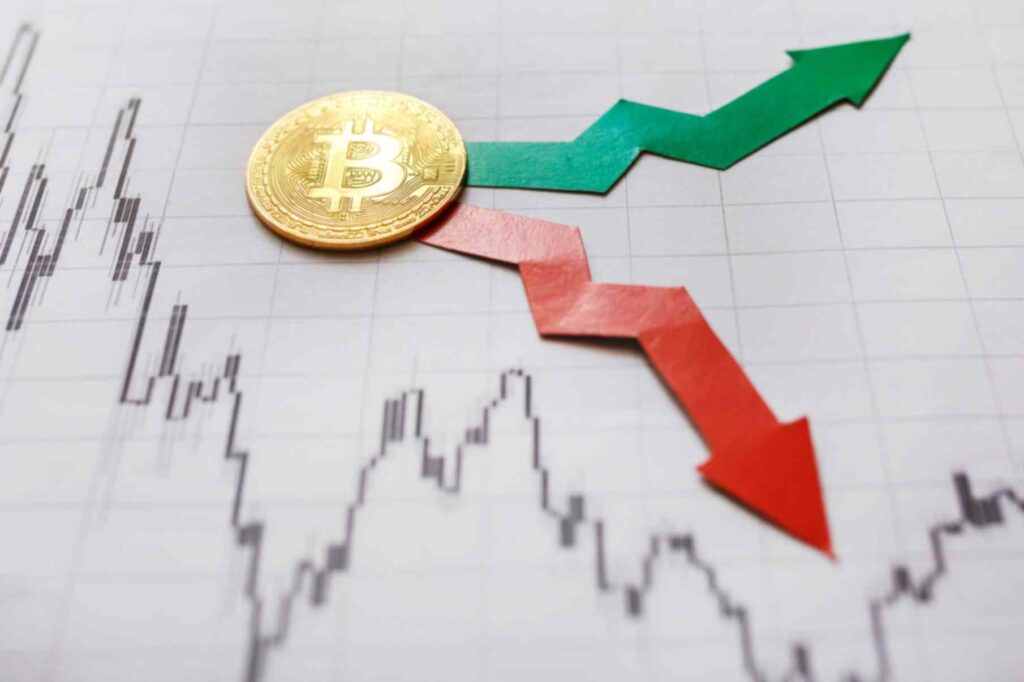
The cryptocurrency market is buzzing with activity as April 2025 unfolds. Qubetics, a rising star in the blockchain arena, is making waves with its innovative presale strategy. Meanwhile, Sonic has made significant strides in enhancing cross-chain interoperability, while Cardano continues to expand its community and drive technological advancements. Among these developments, Qubetics stands out as the best crypto presale to join in April 2025 , offering unique opportunities for early participants. Qubetics: Revolutionizing Blockchain Interoperability Qubetics is on a mission to transform the blockchain landscape by addressing the interoperability challenges that have hindered seamless communication between different blockchain networks. Its flagship product, the QubeQode Integrated Development Environment (IDE), empowers developers to create decentralized applications (dApps) with unprecedented ease. This user-friendly platform simplifies the complexities of blockchain programming, making it accessible to both novice and seasoned developers. As of its 30th presale stage, Qubetics has sold over 508 million $TICS tokens to more than 24,900 holders, raising over $16.2 million. Each presale stage lasts seven days, concluding every Sunday at midnight, with a 10% price increase after each phase. Currently, $TICS tokens are priced at $0.1729, offering early participants a unique opportunity to acquire tokens before the mainnet launch. Analysts’ Predictions: Current $TICS Price: $0.1729 per token $TICS at $1 After the Presale: 477% Return on Investment (ROI) $TICS at $5 After the Presale: 2,789% ROI $TICS at $15 After Mainnet Launch: 8,567% ROI These projections have fueled a sense of urgency among potential participants, making Qubetics the best crypto presale to join in April 2025. The presale’s tiered pricing mechanism creates a Fear of Missing Out (FOMO) sentiment, driving increased participation as each stage concludes. However, it’s essential to approach this opportunity with a clear understanding of the associated risks, including technological uncertainties and regulatory considerations. Sonic: Enhancing DeFi Connectivity with Chainlink Integration Sonic has emerged as a significant player in the decentralized finance (DeFi) space by adopting Chainlink’s Cross-Chain Interoperability Protocol (CCIP). This strategic move enables Sonic to streamline cross-chain data transfers and communication, enhancing the scalability and usability of its decentralized ecosystem. By leveraging CCIP, Sonic ensures a seamless flow of information across blockchains, reducing costs and increasing efficiency. The integration of CCIP has already led to increased user activity and demand for Sonic’s native token. Developers and businesses now have access to a scalable framework that supports decentralized applications with real-world use cases. This positions Sonic as a pioneer in cross-chain solutions, addressing interoperability challenges that have long plagued the blockchain industry. Cardano: Strengthening Community and Technological Growth Cardano continues to make significant strides in the blockchain space, focusing on scalability, sustainability, and interoperability. The platform’s commitment to peer-reviewed research and evidence-based methods has fostered a strong and growing community. Recent upgrades have enhanced Cardano’s smart contract capabilities, enabling more complex and diverse decentralized applications. These developments position Cardano as a leading platform for building decentralized solutions with a focus on security and scalability. Understanding Interoperability in Blockchain Interoperability refers to the ability of different blockchain networks to communicate and exchange information seamlessly. This capability is crucial for the growth and adoption of decentralized technologies, as it allows for the transfer of assets and data across disparate platforms. Effective interoperability solutions enable developers to build applications that leverage the strengths of multiple blockchains, creating more robust and versatile decentralized solutions. Key Aspects of Blockchain Interoperability: Cross-Chain Communication: Facilitates the exchange of data and assets between different blockchain networks. Shared Security Models: Ensures that assets and data remain secure during cross-chain transactions. Scalability Solutions: Enhances the capacity of blockchain networks to handle increased transaction volumes. The Crypto Updates Standardized Protocols: Establishes common frameworks that different blockchains can adopt for seamless interaction. Understanding these aspects is essential for businesses, professionals, and individuals looking to navigate the evolving blockchain landscape effectively. Conclusion In the dynamic world of cryptocurrency, staying informed about emerging projects and technological advancements is crucial. Qubetics, Sonic, and Cardano each offer unique contributions to the blockchain ecosystem. Qubetics’ innovative presale strategy and focus on interoperability position it as the best crypto presale to join in April 2025. Sonic’s integration of Chainlink’s CCIP enhances its DeFi offerings, while Cardano’s ongoing development strengthens its community and technological foundation. As the blockchain space continues to evolve, these projects exemplify the innovative solutions driving the industry’s growth. For More Information: Qubetics: https://qubetics.com Presale: https://buy.qubetics.com Telegram: https://t.me/qubetics Twitter: https://x.com/qubetics Frequently Asked Questions (FAQs) What is the current stage of the Qubetics presale? Qubetics is currently in its 30th presale stage, with over 508 million tokens sold to more than 24,700 holders. The token price is now $0.1729. Why is Qubetics considered the best crypto presale to join in April 2025? Its advanced interoperability, real-world utility, strong tokenomics, and developer-friendly tools like QubeQode IDE make it one of the top upcoming crypto projects in 2025. What makes Sonic unique in the DeFi space? Sonic uses Chainlink’s CCIP for cross-chain communication, allowing assets and data to move between blockchains without friction. How does Cardano compare to newer projects like Qubetics? Cardano is a well-established Layer 1 blockchain with strong academic foundations, but Qubetics offers more advanced interoperability and developer usability right out of the gate. Where can one buy Qubetics ($TICS) tokens during the presale? Tokens can be purchased directly via Qubetics’ official presale platform. Each stage ends weekly on Sunday, with a 10% price increase afterward. The post From Hype to Real-World Utility — Qubetics: The Best Crypto Presale to Join in April 2025 while Sonic and Cardano Surge appeared first on TheCoinrise.com .
The Coin Rise
You can visit the page to read the article.
Source: The Coin Rise
Disclaimer: The opinion expressed here is not investment advice – it is provided for informational purposes only. It does not necessarily reflect the opinion of BitMaden. Every investment and all trading involves risk, so you should always perform your own research prior to making decisions. We do not recommend investing money you cannot afford to lose.
Ethereum Faces Key Price Levels: Whale Activity and MVRV Bands Suggest Buying Opportunity

Ethereum (ETH) currently trades in a critical price range. The period of consolidation raises questions about the next major move for the second-largest cryptocurrency by market capitalization. Traders and investors await a breakout in either direction, which could potentially define Ethereum’s short-term trajectory and lead to a reestablishment of trend and price discovery. In the middle of this price uncertainty, there are still signs that a solid buying opportunity is coming together. The price of Ethereum has been approaching a well-known threshold, the lower Market Value to Realized Value Price Band, where significant previous dips in its price have occurred. This band is a pretty good indicator of an asset’s price level being in the vicinity of a really strong buying opportunity. The reason is that the MVRV (Market Value to Realized Value) indicator in itself measures the difference between an asset’s price and the price at which it was last moved. So it’s a pretty good gauge of whether an asset’s price level is overbought, being a very good buying opportunity sign when its price is en route to hitting this lower band. The best #Ethereum $ETH buying opportunities have historically occurred when price dips below the lower MVRV Price Band, and that’s exactly where it is now! pic.twitter.com/qVg9R2ewpe — Ali (@ali_charts) April 19, 2025 Now that Ethereum is trading in this lower MVRV band, it could signal that the cryptocurrency is undervalued compared to its realized price. This is an appealing factor for any investor looking to enter the Ethereum market at a discount. As the chart shows, there have been instances when Ethereum has dropped below this level only to reverse and quickly trade well above this MVRV. Buying pressure tends to build from both retail and institutional investors. Whale Activity Continues to Fuel the Market Despite some recent turbulence in the wider market, Ethereum whales have been as active as ever, accumulating vast amounts of ETH. This continued accumulation hints at something much more persuasive than mere confidence in a crypto project. It telegraphs institutional and high-net-worth investor confidence in Ethereum at its current price. A whale just six hours ago bought 2,400 ETH worth about $3.85 million at the time of the transaction. This was part of a broader accumulation by this same whale that has now netted them 12,010 ETH worth a total of $18.39 million over the past 10 days. What is particularly interesting about this is that the average price paid for the ETH over the last 10 days is $1,531. A whale bought another 2,400 $ETH ($3.85M) 6 hours ago. This whale has bought 12,010 $ETH ($18.39M) at an average price of $1,531 in the past 10 days. https://t.co/calmuM1Cvi pic.twitter.com/WfUm2Q9yCj — Lookonchain (@lookonchain) April 19, 2025 Whale buying is a strong indicator of institutional confidence in Ethereum’s long-term prospects. When we see these big players coming in and accumulating, that is very bullish for the price of Ether. Why? Because they are able to absorb a tremendous amount of Ether without moving the price, suggesting we are in a price-discovery phase, and they are expecting a breakout to the upside at some point in the not-too-distant future. What’s Next for Ethereum? With Ethereum now placed between two important supply zones, the $1,540 and $1,630 levels, its immediate future depends largely on which side of this range it breaks out from. A move above $1,630 could trigger renewed buying pressure and possibly drive Ethereum into the next major resistance levels, marking a shift into a bullish trend for the asset. On the other hand, if Ethereum fails to hold above $1,540 and dips below that level, it could see price levels much lower than where it currently trades. Ethereum’s present situation makes for interesting viewing. In what is generally perceived to be a lower MVRV condition—where the market value is below the realized value—accumulation by large holders of the asset (whale accumulation, in crypto parlance) has been going on across much of the past year. Whale watchers, or at least those who track large holder accumulation, see this MVRV condition and the whale accumulation as precursors to possible significant upward momentum in the asset’s price. Bullish Sentiment Building Despite Market Volatility Despite the recent wider market volatility, Ethereum seems stable, holding its price in key supply zones. This appears to be an investor-built wall of support on the way down and a stopping point on the way up in price action. At the very least, Ethereum’s plumbing seems to be working efficiently, with price movements transferring well through its key part of the market. This is also hopefully setting it up for a continued hopefully upward bias. For traders, the current price action purports a delicate balancing act. On one side, Ethereum is approaching what could be an almost perfect buying opportunity, considering not just the almost flawless MVRV conditions but also the buoyant activity from some of the biggest players in the market—those whales. On the other side, traders must continue to exercise a good deal of caution, as price is still very much in a range that could flip in either direction depending on what the next market catalyst is (or isn’t). To conclude, Ethereum stands at a crucial crossroads of pricing. With heavy activity from crypto whales, MVRV conditions that strongly favor price appreciation, and vital support at critical price levels, the potential for substantial upside exists if Ethereum can manage to break through its current supply zones. Market participants of all shapes and sizes will, of course, need to remain vigilant, watching both the technical action and the broader macroeconomic picture to A: navigate these next moves effectively. Whether Ethereum price carries on with its present credentials and heading or falls back into more of a neck-and-neck consolidation pattern than it has observed for most of this year, B: the cautious-to-optimistic outlook for holders of tokens seems to remain intact. Disclosure: This is not trading or investment advice. Always do your research before buying any cryptocurrency or investing in any services. Follow us on Twitter @nulltxnews to stay updated with the latest Crypto, NFT, AI, Cybersecurity, Distributed Computing, and Metaverse news ! The Coin Rise

Bitcoin’s Resilience Amid Macro Uncertainty: Has the Bottom Been Reached?
In an era of macroeconomic uncertainty and tightening liquidity, Bitcoin (BTC) continues to surprise many with its performance. Concerns regarding inflation and the global economic state, as well as a Federal Reserve that is still sending mixed signals and in much expected “wait and watch” mode, have done little to keep BTC down. In fact, it has punched through all-time-high levels to sit right now at a price above $84,000 and a market cap well above $1.5 trillion. The big question now is whether this ascent can continue. Key Indicators Pointing to Bitcoin’s Bottoming Out Sjuul presents a data-based viewpoint, detailing why the present price movement of Bitcoin might signal the conclusion of its bearish cycle. Here are the main points he makes: 1. Actualized capital losses reach record highs. A crucial indicator of market sentiment is the Realized Cap—a metric that accounts for the value of Bitcoin at the price it was last moved. When Bitcoin is traded at a loss, the Realized Cap shows how much of the market is currently underwater. Recently, Bitcoin’s Realized Cap in loss reached an all-time high (ATH) of $410 billion. According to Sjuul, this is significant because it reflects a broad swath of investors who are sitting at a loss, particularly those who bought BTC after its peak in November. Historically, when this metric hits new highs, it signifies the point at which most investors become unwilling to sell at a loss, often marking the capitulation phase. 2. Short-Term Holder (STH) Losses Reflect the Levels of FTX Mishap Another indicator pointing toward Bitcoin’s potential bottoming out is the state of Short-Term Holders (STH). Typically, these holders have acquired Bitcoin within the past six months. They often capitulate during the formation of a market bottom. Currently, the unrealized losses for these short-term holders have reached levels that are comparable to those seen during the FTX crash. In fact, after looking at charts of unrealized losses, it seems clear that during the crash of August 2024, unrealized losses among STHs were lower than what we are seeing now. When short-term holders are forced to sell at a loss, it often signals that the bottom is in and the price is about to go back up. 3. The Slowdown of Retail Selling Even though Bitcoin has declined from its peak of $109,000 to its current price of $84,000, retail investors are not leading the charge in selling. According to data from CryptoQuant, our smaller investors—that’s the term they use—are often referred to as shrimps. These are investors who hold less than 1 Bitcoin. They have been our primary sellers. In fact, on average, these shrimps have been selling about 480 Bitcoin daily. They haven’t been just holding; they have been selling. Meanwhile, our whales—investors holding over 1,000 Bitcoin—have only been selling around 70 Bitcoin per day. This disparity suggests that retail investors are leading the market to a possible capitulation point. 4. Coinbase Premium is Recovering. Coinbase, one of the largest cryptocurrency exchanges, has witnessed the revival of its Bitcoin premium after it bottomed out in February. The premium is the price difference of Bitcoin traded on Coinbase versus other exchanges. When the premium starts to rise, it is often seen as a sign that institutional investors are returning to the cryptocurrency market and that demand is rising. This recovery is also reminiscent of a similar pattern seen in Q3 2024 when Bitcoin began to move upward after hitting a bottom. We are also seeing fairly steady inflows into Bitcoin ETFs (exchange-traded funds), which also can only serve to increase demand for the asset. 5. Whales Are Accumulating Aggressively Right now, a select number of individuals are amassing vast amounts of supply. Indeed, a current on-chain analysis demonstrates that these individuals have been purchasing and stashing their assets at an aggressive rate. Maybe the clearest sign of a potential bottom is the behavior of whales, large investors who hold massive amounts of Bitcoin. Smart money typically sells at the top and buys at the bottom. Since Bitcoin’s price fell under $85,000, though, these large players have been on the buying side, accumulating aggressively. In just the past six weeks, they have picked up 100,000 BTC, worth a staggering $8.45 billion. Such accumulation—obviously a sign of confidence on the part of the buyers—is a sign not just of potential bottoming behavior but also of a likely uptrend in the relatively near future. The Macro uncertainty is at its highest level. Liquidity is getting drained from the economy, and the FED is still in wait and watch mode. Yet, BTC is trading above $84,000 and outperforming global assets. Here`s why I think BTC has bottomed out. A thread: pic.twitter.com/K0ake2abYq — Sjuul | AltCryptoGems (@AltCryptoGems) April 18, 2025 Conclusion: A Gradual Climb Ahead All these pointers together seem to convey that Bitcoin has possibly already reached its nadir or is almost there. Even though the price of Bitcoin may not explode to reach $100,000 next week, the market is presenting a nature of rising back toward a bullish condition again. If the price does break above what seems to be a commanding stuck price point of $100,000, there is a consensus that altcoins will also start rising again back toward their all-time highs. Currently, the indications seem to favor those who think that Bitcoin’s bear market has ended. The next few months should see us move toward a recovery. However, it looks like the recovery may be slow and will likely be punctuated by some volatility. Like always, we need to keep an eye on the overall economy, as these big trends shape the crypto space. Disclosure: This is not trading or investment advice. Always do your research before buying any cryptocurrency or investing in any services. Follow us on Twitter @nulltxnews to stay updated with the latest Crypto, NFT, AI, Cybersecurity, Distributed Computing, and Metaverse news ! The Coin Rise











